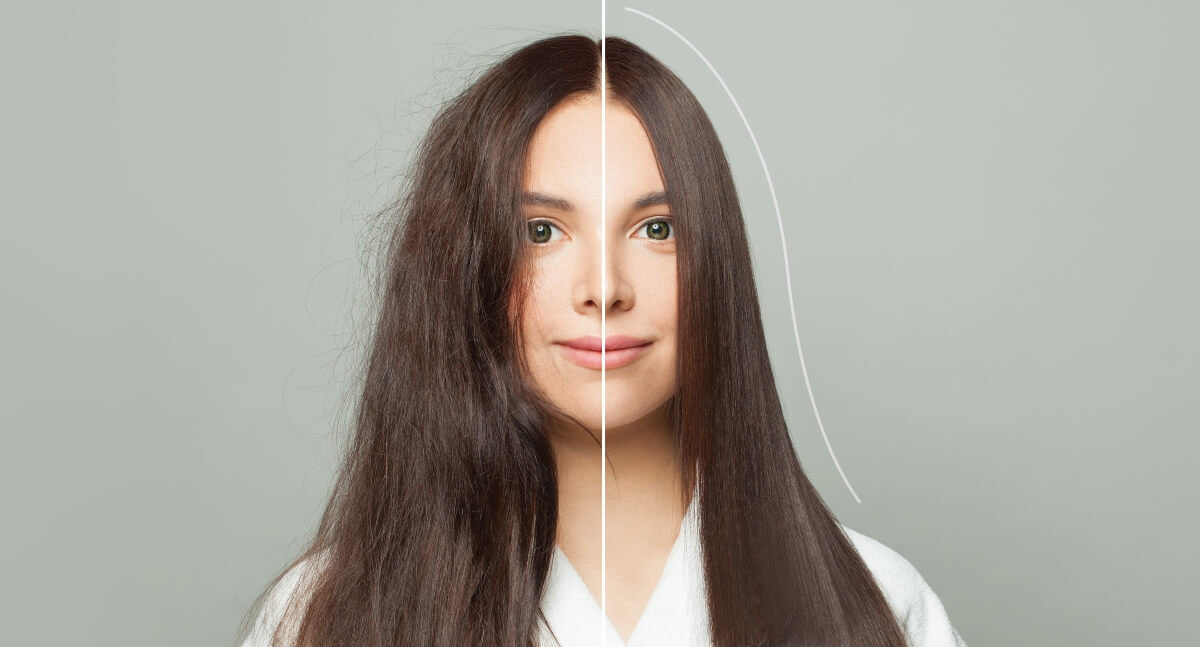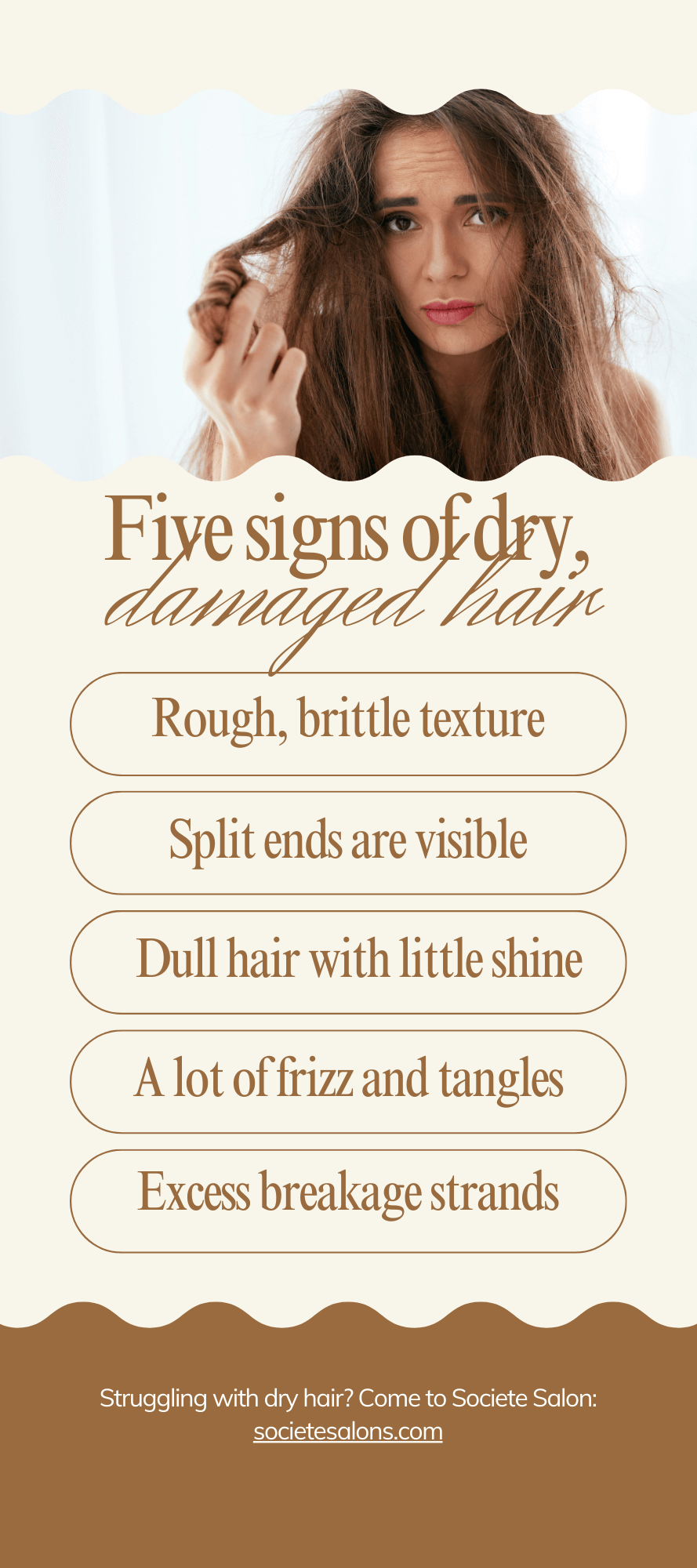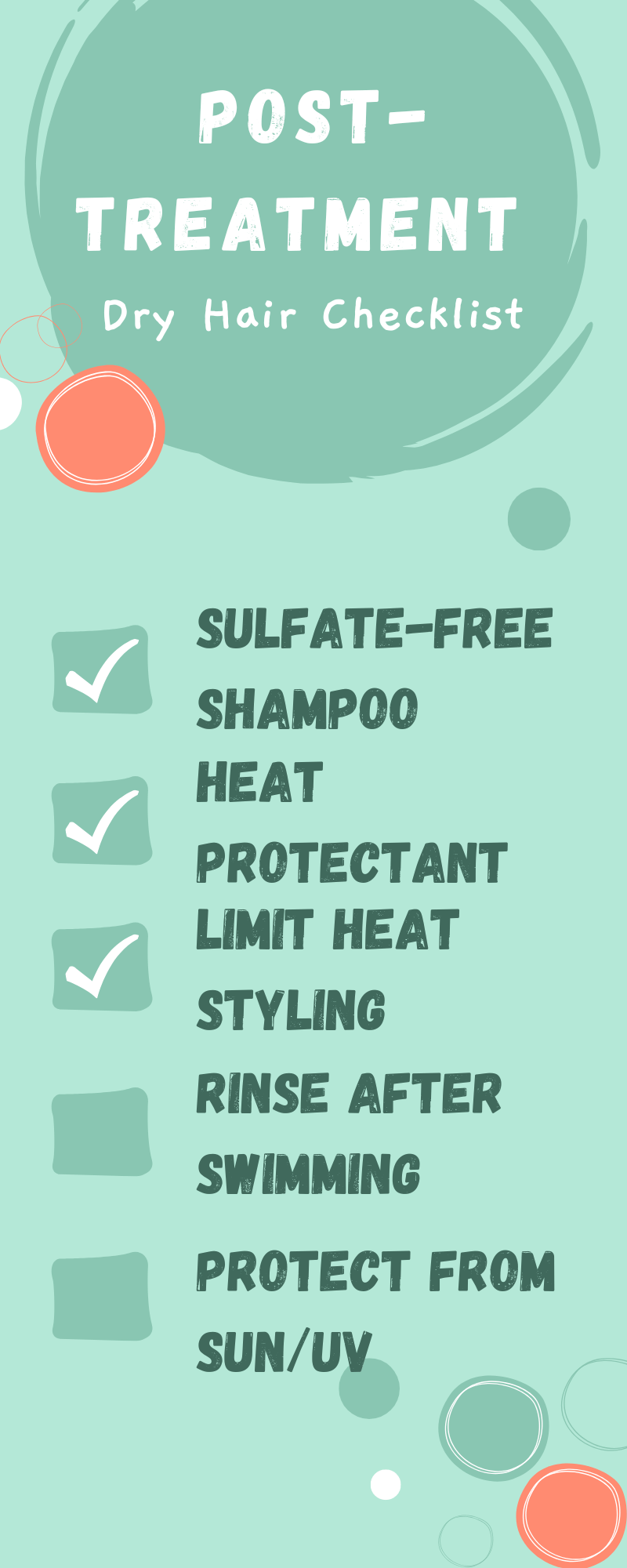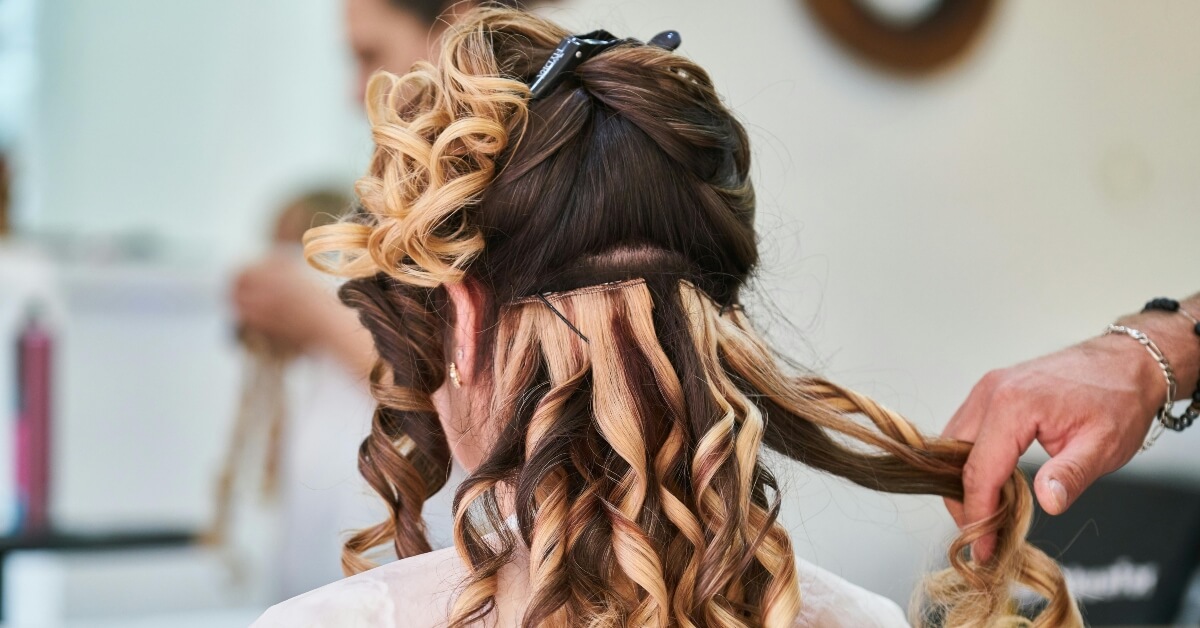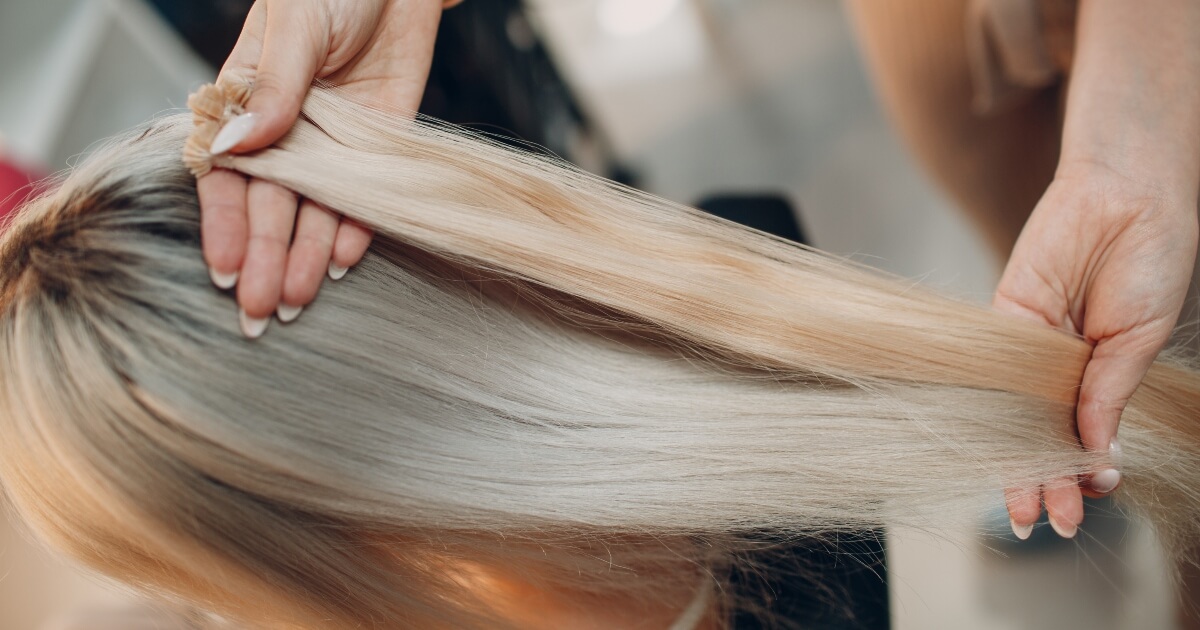14 Key Insights from the Blog
- Professional stylists use specialized porosity testing equipment to measure exactly how fast your hair absorbs moisture, which determines what treatments will actually work.
- Short, splintered hair breaks indicate damage from heat or chemicals, while longer strands with white bulbs are normal shedding.
- Your hair has three layers that damage differently – the cuticle gets rough and chips off, while the cortex loses protein and moisture.
- Over-moisturized hair needs protein to strengthen, while protein-overloaded hair becomes brittle and needs moisture instead.
- Bond-building treatments actually reconnect broken sulfur bonds from chemical damage, unlike other treatments that just coat the hair.
- The first 48-72 hours after any treatment determine how well it works and how long it lasts.
- Fine hair requires gentler treatments because heavy products will weigh it down and make it look limp.
- Keratin treatments can permanently change your natural curl pattern, so understand this before committing.
- Many salons now offer “cocktail” treatments that address multiple hair issues in one session for better results.
- Treatment packages and building relationships with stylists leads to better pricing and service over time.
- Expensive salon treatments aren’t always better – focus on finding skilled stylists who understand your specific hair type.
- Hard water can interfere with treatment benefits, so invest in a shower filter for better and longer-lasting results.
- Treated hair may style easier, tempting you to use more heat, but protection becomes even more critical to preserve your investment.
- Most professional treatments require sulfate-free products to maintain results, so factor this ongoing cost into your budget.
Is your hair dry or damaged?
Societe Salon explains how to identify dry, damaged hair and what you can do about it. While repairing your hair at home is an option, it’s often not enough. Our experienced stylists explain the in-salon options for treatment of dry or damaged hair. Often, you need professional treatment for hair that’s been damaged.
If you are struggling with damaged hair, Societe Salon can help. Contact us today to schedule your appointment and learn how our elite hair stylists can help you. We are tirelessly committed to great hair.
Understanding Hair Damage: The Science Behind Beautiful Hair
Do you wonder why your hair is not the same as it once was? Maybe it’s drier, breaks more easily, or just doesn’t look the same because it doesn’t have that luster anymore. Knowing what is actually going on with your hair can be useful so that you can make decisions about treatments and care.
What Actually Happens When Hair Gets Damaged

Your hair has three important layers – think of it as a pencil. The outer layer (cuticle) is like the paint coat, the middle layer (cortex) is like the wood, and the inner center (medulla) is like the graphite core. When your hair is damaged, these layers become disintegrated in different manners.
The cuticle is your hair’s protective covering. When it’s healthy, all those tiny scales are close together and flat. But when it’s damaged, they become roughed up and chip off, kind of like shingles shedding from a roof. That’s why damaged hair is coarse and will tangle easily.
The cortex contains the strength and color of your hair. Breakage here is broken protein chains and lost moisture. Your hair gets weaker, wet-stretchy, and can even change color or texture. Most of the ugly structural damage happens here.
Chemical damage is from things like bleach, relaxers, and permanent color. These break down the protein bonds that hold your hair together. Mechanical damage is from brushing, heat, and tight styles – literally anything that puts physical stress on your hair. Environmental damage sneaks up on you with sun exposure, pollution, and even the water that you wash it in.
Split hair looks dull because raised cuticle scales disperse light instead of reflecting it smoothly. It dries out because moisture leaks out of the cracks, and it breaks up because the inner structure is disturbed.
The Most Common Causes of Hair Damage Women Encounter Today
Heat styling tools are probably the biggest culprit. Your blow dryer, curling iron, and flat iron can heat up to the point of actually cooking your hair proteins. If you use these appliances every day, especially without heat protectant use, your hair structure wears away slowly. The damage is gradual, and that’s why you might not even notice it’s occurring.
Another one of the biggest offenders is chemical processing. Hair coloring, especially lightening, permanent waving, and relaxing all mean breaking your hair’s natural bonds. Even so-called “gentle” treatments harm hair a bit – it’s the price of the appearance you want.
Environmental factors beat your hair every day and every day. UV light breaks down hair proteins just like it damages your skin. Pollution coats your hair with particles that cause oxidative stress. Hard water leaves deposits of minerals that make your hair crunchy and interfere with products to perform as they are supposed to.
Over-washing depletes your hair of its natural oils faster than your scalp is able to manufacture them. Strong shampoos are particularly bad for you if you wash every day. Your hair needs some of those natural oils to stay healthy and protected.
What you ingest affects your hair too. Your hair follicles need protein, iron, biotin, and other nutrients to produce healthy, strong hair. Nutrient starvation or crash diets may weaken your hair and make it prone to damage.
DIY Hair Damage Check Test Checklist
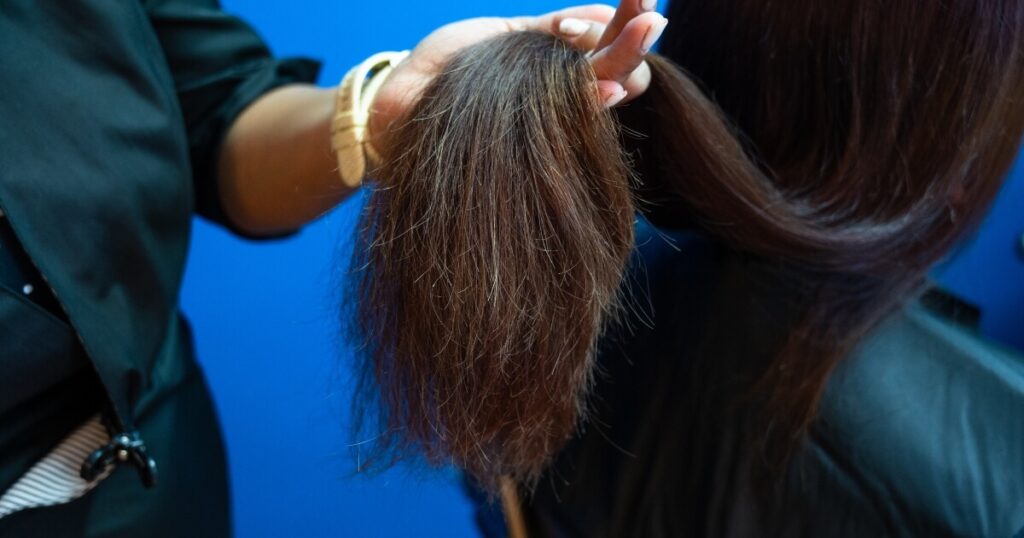
The following is a simple way of knowing the condition of your hair at home:
- Touch Test: Finger a strand from roots to ends. Healthy hair will be smooth. If it’s gritty or your fingers get caught, you have cuticle damage.
- Stretch Test: Take a damp strand and stretch it lightly. Healthy hair will stretch around 30% before breaking and spring back. If it over-stretches without springing back, you require protein. If it breaks at once, you have severe damage.
- Shine Check: Examine your hair in natural light. Healthy hair glows and has a natural shine. Dull, lackluster hair usually means damaged cuticles.
- Porosity Test: Put a fresh strand in a glass of water. If it sinks quickly, your hair is extremely porous (damaged). If it floats at the surface, you have low porosity. Normal porosity hair sinks slowly.
- Breakage Count: Check out your brush, pillowcase, and shower drain. Some breakage is okay, but if you’re seeing lots of little broken pieces rather than long shed hairs, that’s damage.
If there are several symptoms of damage, then it might be the time to try professional treatments. The good news is that you cannot fully repair damaged hair but can restore its condition and try to stop further damage using the correct method.
Is Your Hair Actually Damaged? Professional Assessment vs. DIY Recognition
Often what appears to be damage can be no more than your hair’s natural texture, or you may have more issues than you realize. Here’s how to discover.
What Professional Stylists Notice
When you sit in that salon chair, your stylist is doing far more than just checking out your hair. They are carrying out diagnostics you likely never even notice.
Professional porosity testing goes beyond the water glass test. Stylists use specific testing equipment to determine exactly how fast your hair absorbs and emits moisture. They will drop several drops of water in various areas, then determine how fast it absorbs. This informs them if your cuticles are damaged and what your hair will do with treatments.
The elasticity test is a common thing that most of us fail to do at home. Hair professionals check wet and dry elasticity since broken hair responds differently when wet or dry. They will slowly pull on a strand of hair while observing when it breaks or does not return to its starting length.
Some shops use microscopic analysis – actually looking at your hair through the microscope to identify cuticle health, cortex damage, and patterns of damage. It’s absolutely amazing what they can tune in to that you can’t with the naked eye.
Professional damage grading uses standardized assessment with scoring to quantify hair condition from mild to extreme. This dictates what treatments will be effective and what type of outcomes you will achieve.
Signs You Can Actually Spot at Home

Your hair’s always tipping you off about how it’s doing. The rest of us just don’t have the first clue what to watch for.
Changes in texture are the most common sign of trouble. If your otherwise smooth hair feels gritty, or your naturally textured hair feels abnormally harsh, that’s often damage to the cuticle speaking.
Pay attention to break patterns, too. Are you receiving little pieces that clearly snapped off? Or do you see longer strands falling out naturally? Short, splintered breaks are usually damage, while the longer pieces with the little tiny white bulb on the end are normal shedding.
Shine loss sneaks up on you, so you might not even notice it from day to day. Compare current photos with older ones – damaged hair appears noticeably duller in pictures.
This simple strand test method really does work: Pull a single strand between your thumb and index finger and slide down from the root to the tip. Healthy cuticles should be slick in this direction. If it’s scratchy or sticks, you’ve got damage.
When Should You Seek Professional Assistance?
If your home test reveals a number of signs of damage, or you are planning to use any chemical treatments, get a professional test first. It is worth paying the consultation fee than making expensive mistakes.
Interactive Damage Assessment Quiz:
- What is your hair like when you run your fingers through it?
- Smooth and silky = Very little damage
- Rough or tangly to some degree = Some damage
- Very rough, catches a lot = Considerable damage
- What does the wet strand do when you stretch it softly?
- Stretches and returns to original shape = Healthy elasticity
- Stretches and is soft = Needs protein
- Immediately breaks = Severe damage
- How much hair do you lose daily from brushing?
- A few long hairs = Normal shedding
- Several short broken hairs = Breakage damage
- Too much of any length = Time for professional help
If you primarily selected the first ones, you’re fine. Mixed selections show moderate damage that may be assisted by professional treatments. Primarily third selections? Straight away for professionals.
Societe Salon knows how to spot the causes of dry, damaged hair. We also know how to repair your hair, making it healthy and vibrant once again.
The Complete Guide to Professional Hair Treatments: Types, Benefits, and Best Candidates
It’s daunting going into a salon and being told all about the different kinds of treatments. Let’s clarify what each actually does and who can best benefit from them.
Deep Conditioning and Moisturizing Treatments
Treat these as deep moisturizers for your hair. As your regular conditioner focuses on the surface, the deep treatments penetrate deeper into the hair shaft to replace moisture from within outwards.
Vintage deep conditioning treatments use thicker molecules that coat and condition the cuticle of your hair. They’re wonderful for immediate texture and manageability enhancement. Your hair will be softer and shinier right away, but results typically last for a week or so.
Heavy moisture masks penetrate even further. These masks contain smaller molecules that actually penetrate into the cortex layer. The treatment typically involves applying the mask, followed by steam or heat to allow it to penetrate more. Some salons utilize special steamers that are hair-dryer-looking, old-fashioned-style – don’t be frightened, they’re a lot more comfortable than they appear.
Steam treatment opens the cuticle briefly, allowing water to penetrate more than it would naturally. Heat-stimulated treatments are the same but use processing heat instead of steam. Either can be a real game-changer for how your hair looks and feels.
Who benefits most from these treatments?
- Brittle or dry-feeling hair
- Dry color-treated hair
- Heat-damaged hair
- Anyone suffering from frizz caused by dehydration
You can expect to see immediate results that last 1-2 weeks. Costs vary depending on your location and the specific treatment. For best results, most stylists recommend monthly deep conditioning treatments.
How Protein Treatments Actually Work
If moisture treatments are like moisturizer, protein treatments are like vitamins for your hair. They temporarily fill in gaps in your hair’s structure where proteins have been lost.
Your hair consists mostly of keratin protein. When that is compromised, you have weakened structures and holes in the hair shaft. Protein treatments then deposit various types of proteins – keratin, collagen, silk proteins, wheat proteins – into these voids temporarily.
This is the catch with protein treatments: timing is everything. Over-moisturized hair, oddly enough, needs protein to restrengthen. But protein-filled hair is brittle when you add more of it. That is why professional assessment is necessary.
The treatment is usually performed to allow application of the protein treatment to cleaned, wet hair, processed in steam or heat, followed by sealing with a moisturizing treatment. There are some protein treatments that have to be rinsed out while others can remain on.
Signs your hair requires protein rather than moisture:
- Goes mushy or gummy in wet state
- Bends beyond its length without breaking
- Loses body and shape
- Colors quickly
Be careful of protein overload: If your hair is stiff, brittle, or breaks when you’ve had protein treatments, you’ve overloaded it. That’s why some stylists use alternating protein and moisture treatments.
Professional protein treatments can cost $50-120 and last 4-6 weeks. The stronger the treatment, the longer you want to wait between treatments.
Keratin Smoothing: What You Need to Know
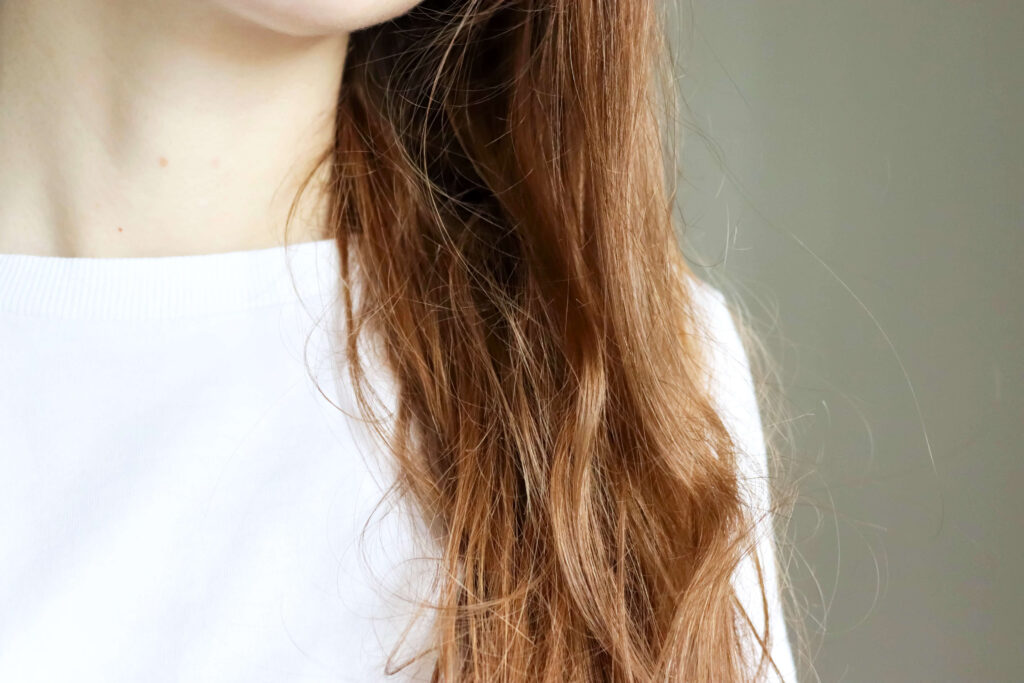
Keratin treatments have been trendy, yet folks are still confused about what they do and which one might be best for your hair.
Traditional keratin treatments contain formaldehyde or formaldehyde-releasing agents, which temporarily break down the hair’s natural bonds prior to reforming them in a more straight alignment. The treatments can diminish 50-80% of curl and most frizz can be removed. They can last 3-4 months but require exact aftercare.
Formaldehyde-free alternatives use other chemistry to cause hair to relax without health risk; they’re generally milder but less long-lived or dramatic. They are sometimes referred to as “express” or “Brazilian blowout.”.
- Section by section process: Your hair will be shampooed with a clarifying shampoo by your stylist, applied section by section with the keratin solution, blow-dried, and completed flat ironing at high heat to seal it all in. The process takes 2-4 hours depending on the thickness and length of your hair.
- Maintenance is rigorous: No wash for 72 hours, no clips or ponytails that will dent the hair, and you have to use sulfate-free products to extend the treatment.
- Best for: Frizzy, coarse, or unmanageable hair that takes forever to style. Avoid very damaged hair or over-lightened hair more than 2-3 levels.
- Cost: Considering the time saved in day-to-day styling, most individuals find that it is well worth it. Just remember that you’ll need to get touch-ups every 3-4 months.
Bond-Building Treatments: The Science of Hair Repair
These are the latest generation of professional treatments, and they work differently than anything we’ve ever had before. Instead of only coating or filling the hair, these actually mend some of the broken bonds in your hair shaft.
Olaplex was the first major one here, but now there are others like K18, Redken pH-Bonder, and Wellaplex. They all have the concept that broken hair splits disulfide bonds – the chemical links that give hair its shape and strength.
This is the way the science is: When you dye, bleach, or heat-press your hair, you break these sulfur bonds. Bond-building treatments contain ingredients that can locate the broken bond sites and help reconnect them. It’s not magic – you just can’t actually fix really bad hair – but you can toughen up what you’ve got a bit.
In-salon vs. take-home versions: Professional treatments are more intense and act quicker. Take-home products allow you to keep the results going between salons. Both are often suggested by stylists to be used together for optimal results.
Comparison of the leading systems:
- Olaplex: Three-step system, can be incorporated into color services
- K18: One-step mask, acts in 4 minutes
- Redken pH-Bonder: Targets pH balance with chemical services
Integration with chemical services: Here is where bond-builders are really experts. Use them with your color or bleach service to reduce damage dramatically. Many colorists now include them automatically in bleach services.
Long-term benefits: Unlike treatments that will ultimately fall out, bond-builders can provide cumulative benefits. Each treatment can make your hair slightly stronger than the previous one.
Pricing: Costs vary, depending on if its a single treatment or an add-on to another service. Most people experience and see effects immediately after the first treatment, with improvement further supported over multiple treatments.
Treatment pairing techniques: Protein treatments can be applied before bond-builders, and moisture treatments applied after. There are “cocktail” treatments, applying several techniques in one session, offered at some salons.
Seasonal needs: Deep conditioning treatments are excellent during summer when UV and chlorine dry out the hair. Protein treatments are ideal during winter when indoor heat makes hair hard. Bond-builders are fine throughout the year, provided you color your hair regularly.
Hair type-specific regimens: Fine hair tends to need lighter proteins and fewer frequent deep treatments. Coarse, thick hair can handle stronger treatments more often. Curly hair tends to need more moisture, and straight hair might need more protein for volume.
Emerging and Specialty Professional Treatments
The hair industry is always evolving, and one of the newest treatments is on overall hair wellness rather than simply fixing damage.
Scalp Treatments: The Secret to Well-Cared-For Hair
The condition of your scalp directly affects the quality of your hair, yet most of us ignore it until something goes amiss. Professional scalp treatments are becoming popular because individuals are realizing this connection.
Scalp detox treatments remove product residue, excess oil, and dead skin cells that can clog follicles. It’s a deep cleanse for your scalp. The treatment generally consists of a pre-treatment oil or serum, gentle massage, and a clarifying treatment to wash it out.
Circulation-promoting treatments use massage, aromatics, or even equipment specifically designed to increase blood flow to your scalp. More circulation means more nutrients getting to your hair follicles, which can result in stronger, healthier hair growth over time.
Some salons also offer treatments for some scalp conditions like dandruff, sensitivity, or oiliness. These can be specifically created for your scalp and can include ingredients like tea tree oil, salicylic acid, or soothing botanicals.
Glossing for Shine and Protection
Hair glossing is somewhat similar to a topcoat for your hair. It gives it shine, smooths the cuticle, and even tones your hair slightly.
Clear gloss treatments are all shine and protection. They finish a surface that’s even smoother and reflects light and protect your hair from the outside world. These last for 4-6 weeks and can be done on any color.
Tinted gloss treatments can brighten light color, intensify shade, or even make subtle color corrections. They’re much less dense than permanent color and wash out over weeks.
How Glossing Protects Treated Hair
The gloss leaves behind a layer that helps to trap moisture from other treatments and protect against UV damage and pollution. Most hairstylists recommend glossing after major treatments to help keep their benefits going longer.
The Evolution of Customized Treatment Cocktails
Creative salons are moving away from one-size-fits-all treatments to completely customized formulas for your hair’s unique needs.
This may mean mixing different levels of protein and moisture treatments, or adding special ingredients for your hair issues, or mixing up different treatments in one session. Some salons use hair analysis equipment to find out just what your hair needs, and then design a custom blend.
The future of personalized hair treatment: We are already starting to see salons dissect your hair at the molecular level and personalize treatments from there. It’s still expensive and only available in upscale salons, but it does show us where the industry is heading. Advanced Technology in Hair Treatments
LED hair health light therapy is increasingly in demand. Low-level laser treatment, or LLLT for short, is purported to stimulate the hair follicles and can enhance hair growth as well as overall hair health. It’s at times combined with scalp treatments for enhanced results.
Ultrasonic treatment application uses sound waves to permit products to travel further into the hair shaft. It’s similar to the ultrasonic facials you’ve probably had, but for hair.
Ozone treatment involves hair exposure to ozone gas, which seemingly mends damage and improves hair condition, say some stylists. The technology is still in development, but pioneers are finding positive results.
Professional insights: Top colorists and treatment specialists emphasize that technology is just a tool – the skill and knowledge of your stylist matters more than fancy equipment. Look for stylists who stay current with education and can explain why they’re recommending specific treatments for your hair.
Choosing the Right Treatment: A Decision-Making Framework
With all the options out there, how do you know what is right for your hair? This is a step-by-step process to making the best choice.
Matching Treatments to Your Hair Type and Level of Damage
Fine hair requires a gentle touch. Severe treatments will drag on it and make it look limp. Employ light proteins, light moisture treatments, and don’t over-process. Bond-builders are known to work wonderfully because they strengthen without dragging it down.
Thick hair is more able to handle more vigorous treatments and generally needs them in order to see results. You can use heavier proteins, heavy moisture masks, and layer treatments together safely more often than someone with fine hair.
Curly hair has special needs: Because curly hair’s natural form resists the penetration of oils down the hair shaft, moisture treatments tend to be larger than protein treatments. Keratin treatments can even change your curl pattern permanently, so make sure that’s what you want.
Straight hair typically requires protein treatments for volume and structure. It also breaks damage more easily, but that works to your advantage because products distribute better.
Color-treated hair considerations: Chemical processing impacts hair in such a manner that it becomes more damaged and porous. You will likely need a combination treatment-protein to rebuild the structure, moisture to combat dryness, and bond-builders to strengthen what is left.
Lifestyle and Maintenance Reality Check
Be practical about your lifestyle. If you’re someone with little time to condition on a daily basis, don’t go for treatments that require restrictive aftercare.
Busy lifestyle options: Bond-strengthening treatments and glosses will not require much upkeep. Deep conditioning treatments give instant results without finicky follow-up care.
High-maintenance treatments like keratin smoothing need to be adhered to strictly. If you can’t commit to sulfate-free product use and gentle styling, you’re wasting your money.
Budget-friendly methods: Focus on treatments that provide the best value for the money. Far too often that means compromising between professional treatments and maintaining results with good quality products at home.
Professional Consultation: How to Get the Most out of Your Stylist
Arrive with specific questions about your problem with your hair, your styling routine, and your goals. The more information you give to your stylist, the better they can serve you.
Ask for treatment history compatibility: Some treatments do not have a good mix. If you’ve recently had chemical services performed, some treatments will not work or be safe.
Get honest expectations on timeline: Ask how long before you’ll see the results, how long before you can have the treatment, and what to anticipate in the first few weeks.
Home care: Make sure you know what you need to do at home and what styling limitations you’ll have.
Treatment Decision Flowchart
Start here: Is your hair dry, brittle, or lifeless?
- Yes: What’s the main concern?
- Feels dry/rough → Deep conditioning treatment
- Thrashes when combing → Protein treatment or bond-builder
- Looks lifeless → Glossing treatment
- Multi-concerns → Consult for combination treatment
- Next: How much maintenance can you tolerate?
- Low → Bond-builders or glossing
- Moderate → Deep conditioning with occasional touch-ups
- High → Keratin or intensive treatment programs
- Lastly: What is your budget and time allowance?
- Instant gratification required → Glossing or deep conditioning
- Long-term investment → Bond-building regimen of treatments
- Fiscal conservative → Professional and at-home treatment alternates
- Consultation Preparation Checklist:
- Pictures of your desired hair
- List of recent chemical treatments
- Your current product regimen
- Honest evaluation of your styling time
- Budget range for maintenance and treatments
What to Anticipate: The Professional Treatment Process
Knowing what is completed throughout your session can make you more comfortable and obtain better outcomes.
Previous to Your Session
Most therapies are best given on clean hair, but don’t wash your hair the instant before your session unless directed by your stylist. Some stylists prefer to accomplish this themselves with clarifying shampoo.
Communication is key: Let your stylist know about any new chemical treatments, medications you take, and scalp sensitivities. Don’t be afraid to share your hair’s history – they’ve heard it all.
Be realistic about what to expect after your consultation. Professional treatments can make a big difference in your hair, but they can’t perform magic on extensively damaged hair.
During the Treatment Process
Average appointment time: Fast treatments like glossing might be 30-45 minutes. More complex treatments like keratin smoothing can be 3-4 hours. Ask for an estimate of time when you book so you can plan accordingly.
Comfort issues: Read a book, listen to podcasts, or get ready to accomplish work emails. Some procedures need sitting under heat or steamer, which may get very hot. Dress comfortably and wear layers that you can shed.
When treatments can be combined: Some treatments complement each other in the same visit, and some need to be done separately. You’ll be told by your stylist, but generally, most other treatments can be combined with glossing.
Immediate Aftercare: The 48 Hours That Make or Break
The first 48 hours after treatment usually make or break how well it works and how long it lasts. Each treatment has some requirements.
General restrictions: The majority of treatments are just not getting water on them for 24-72 hours. Some, like keratin treatments, have no back-combing or clips that can create dents.
Product restrictions: You may have to avoid using products containing ingredients like sulfates, or you might have to use special products to maintain results. Purchase recommended products before your appointment.
Normal vs. concerning symptoms: Some treatments make your hair feel weird initially. Protein treatments make hair feel stiff initially. Keratin treatments might have a chemical smell that will pass. But burning, severe itching, or hair breaking, call your stylist immediately.
Making the Most Out of Your Investment: Post-Treatment Care Measures
Professional treatments are an investment, and aftercare makes sure that you are getting the best out of that investment.
The Critical First Week
This is when the majority of treatments are still “setting” in your hair. Being strict about guidelines during this time can be the difference between results lasting weeks and results that immediately wash out.
Washing Instructions Differ by Treatment
Some need 72 hours of waiting before any water can touch your hair. Others merely require gentle, sulfate-free washing. Be aware of your own requirements and place reminders, if necessary.
Styling Modifications
Heat styling might be restricted initially, or you will need to use lower temperatures long-term. Invest in an excellent heat protectant and consider replacing your styling devices if need be.
Tips for Sleeping
Silk or satin pillowcases reduce friction which damages treated hair. Braids or silk scarves at bedtime are helpful for certain treatments.
Long-Term Care for Long-Lasting Results
Product selection is important: Professionally used products have ingredients that help to prolong the effects of treatment. While they are more costly initially, they can make your treatments last longer, ultimately saving you money.
Heat protection is even more important: Treated hair will actually behave better under styling, and that could cause you to use additional heat. But shield it to preserve your investment.
Maintenance schedules: Most treatments enjoy every 6-12 weeks of retouching. Some, like glossing, can need to be done again in 4-6 weeks. Factor these ongoing costs into your research on treatments.
Pro Tips from Salon Experts
Water quality is more critical than you realize: Hard water can interfere with treatment benefits and make hair feel parched. Purchase a shower filter if you live with hard water, especially after investing in professional treatments.
Environmental protection: UV radiation, pollutants, and chlorine can all damage treated hair. Use leave-in products with UV protection, and always shampoo hair after swimming.
Signs that a touch-up is needed: Your hair will let you know when treatments are fading out. Some common signs are frizz coming back, loss of shine, or changes in texture. Don’t wait until effects are totally gone – touch-ups are more effective when there is still some treatment remaining in your hair.
Month-by-Month Maintenance Calendar
- Week 1: Follow rigorous aftercare, handle with care only
- Week 2-4: Return to normal styling, note how hair responds
- Month 2: Check outcomes, consider further home treatments
- Month 3: Schedule consultation for touch-up timing
- Month 4-6: Touch-up treatments as needed based on hair type and treatment
Make sure to get regular deep conditioning periodically in between professional treatments
Professional Treatment Fees: Investment Planning and Budgeting
Knowing the actual cost of professional hair treatments ensures you’re making good decisions and setting budgets accordingly.
Treatment Cost: What You’ll Pay
National averages differ a lot depending on location and type of salon:
- Deep conditioning: $25-75
- Protein treatments: $50-120
- Keratin smoothing: $200-600
- Bond-building treatments: $35-75
- Glossing: $50-100
- Specialized scalp treatments: $75-150
Pricing considerations: Upscale salons in large cities have higher premium rates. Your stylist’s level of experience will influence price. Hair thickness and length also increase costs. Special treatments or customized services cost more.
Seasonal pricing: Salons also offer sales during slow months, typically January-March and September-October. Holiday specials or new client promotion may be money-saving.
Cost vs. Value: The Real Economics
Price comparison between treatment and your current hair care expense. If you’re spending $200+ per month on tools and products trying to manage damaged hair, a $300 treatment that will last 3-4 months might be cheaper in the long run.
Professional treatments vs. at-home treatments: At-home treatments are less expensive to apply per session but will often require repeated applications more frequently and won’t always provide the same level of results. Professional treatments will generally last longer and work better.
HSA and insurance considerations: Some medically necessary conditions treatments (like bad scalp issues) are HSA-eligible. Notify your practitioner and save receipts.
Smart Budgeting Strategies
Treatment packages make more sense: Salons often promote packages of multiple treatments or package services at a discount. These are convenient if you plan to repeat treatments regularly.
Loyalty programs and relationship building: Rewarding customers often get better prices, first notice on promotions, and the occasional free add-on services. Building a relationship with a good stylist is paid for in the long term.
Strategic planning of treatments: Take treatments with other procedures like cuts or color to utilize your appointment time most efficiently and sometimes get package rates.
Possible Risks and How to Evade Treatment Fiascos
Professional treatments are generally safe if applied correctly, but sometimes something goes wrong. Here’s how to protect yourself.
Side Effects and What to Do About Them
Allergic reactions are rare but dramatic: Always need patch testing, especially for treatments containing formaldehyde or very harsh chemicals. Patch test first and wait 24-48 hours before using full treatment.
Over-processing is when treatments are too strong or applied incorrectly: Symptoms include over-dryness, breakage, or texture alteration. If you notice any of these, stop using any harsh products and consult your stylist immediately.
Poor results are often due to unrealistic expectations: Make sure you and your stylist understand what can and cannot be done. Send pictures, but understand that the condition and kind of your hair affect what can be accomplished.
Red Flags: When to Question Your Stylist
There isn’t a treatment that can completely repair greatly damaged hair or radically change your hair type without concessions. Keep an eye out for stylists who make promises.
A good stylist doesn’t need to rush. They want to spend time reviewing your hair, discussing what you wish to accomplish, and mapping out the procedure. If you feel like you’re being pushed through, consider shopping around.
Although your stylist might genuinely recommend add-ons, beware if you’re pressured to dish out much more money than planned without clear value explanations.
What to Do When Things Go Wrong
If you experience burning, intense irritation, or evident damage throughout treatment, speak up immediately. Don’t worry about courtesy – your hair and health are on the line.
Most professional salons will try to correct mistakes or offer refunds on unsatisfying work. Photodocument complaints and hold onto all receipts and product information. Legal problems: In severe damage incidents, you might need legal advice. Document everything in writing with the salon and seek medical attention if you get chemical burns or severe allergic reactions.
One client experienced severe breakage after a too-enthusiastic protein treatment for her fine, color-treated hair. The salon discounted corrective treatments and restored her hair health over six months. Another client responded to keratin treatment even after patch testing – sometimes reactions occur with full application even when patch tests are negative.
The Future of Professional Hair Treatments
The hair industry continues to evolve, with more advances on the horizon.
Future Technologies and Techniques
Scientists are developing treatments that use nanoparticles to deliver ingredients more precisely into damaged areas of hair. Such treatments could potentially provide more targeted and longer-lasting benefits.
Personalized treatments through genetic testing: Some firms are exploring how genes affect hair health and reaction to therapy. One day, you might get a DNA test that tells you exactly what types of treatments will work best for your hair.
Sustainable and environmental solutions: As consumers become more environmentally conscious, the industry is developing treatments using natural, biodegradable ingredients and packaging. They tend to work just as well as traditional treatments but with less harm to the environment.
Industry Trends Driving Treatment Choices
Clean beauty is pushing salons to treatments with less chemicals. This does not necessarily mean less effective – several of the newer formulations are more effective than older chemical-heavy counterparts.
Apps and readers that scan your hair condition and recommend treatments are becoming more sophisticated. Some salons already use digital tools to track your hair’s response to treatments over time.
Hair care is now considered as part of holistic wellness. Some spas now offer treatments that take into account nutrition, stress, and lifestyle problems along with standard hair care.
Frequently Asked Questions About Treatment for Damaged Hair
How long do treatments actually last?
It is variable based on your hair type, lifestyle, and the type of treatment. Deep conditioning is 1-2 weeks, protein treatments 4-6 weeks, glossing 4-8 weeks, bond-builders may provide cumulative benefits in months, and keratin treatments are 3-4 months. Porosity of your hair, frequency of washing, and product use all play a role in determining longevity.
Can totally devastated hair be restored completely?
No. Hair is actually dead tissue, so damage can’t actually “be repaired” like skin healing up. Treatments can, however, drastically alter the look and feel of damaged hair by filling holes, smoothing cuticles, and strengthening existing structure. The key is to manage expectations and focus on improvement, not restoration.
How quickly can I see results from professional treatments?
Most treatments are immediate, with some being cumulative. Deep glossing and conditioning work immediately. Protein treatments can take a few days to work at their best. Bond-builders have cumulative effects, so you might keep on getting better with frequent uses.
Can I get treatments while pregnant or breastfeeding?
All of them are safe during pregnancy, except stay clear of anything that has harsh chemicals such as formaldehyde. Deep conditioning, protein treatment, and the majority of glossing treatments are safe. Make sure to inform your stylist if you are pregnant so they can choose appropriate products.
How do treatments work with medications?
Some medications can affect how your hair responds to treatments. Blood thinners, hormones, and chemotherapy drugs all affect hair texture and treatment success. Always let your stylist know medications you are taking.
Are treatments safe to apply on chemically processed hair?
This would depend on how your hair is presently and which treatments you are looking at. There are some treatments, such as bond-builders, that are ideally suited for chemically processed hair. Others may be too aggressive for already-damaged hair. Professional guidance is important here.
How often should I receive professional treatments?
Everyone is best treated every 6-12 weeks, but hair condition, lifestyle, and treatment all play a part. Very damaged hair might need to be treated monthly at first, while healthy hair might only need to be treated seasonally.
Are costly treatments always superior?
Not always. Cost usually indicates salon overhead, location, and brand name rather than quality of treatment. A talented stylist with quality product can give superior results at any price level. Prioritize seeking someone who comprehends your hair over the highest-priced option.
Can I perform professional-quality treatments at home?
Professional treatments that are performed at home do exist, but they’re usually weaker and not as effective. You also lack professional application and assessment skills. Some treatments, like keratin smoothing, really need professional use for safety and to work effectively.
Making the Decision: Your Next Steps to Healthier Hair
Here’s your action plan to proceed with professional treatments.
Emergency Repair for Severely Damaged Hair
Start with a professional consultation to figure out what can be salvaged. You might need a series of treatments – maybe protein treatments to rebuild structure, followed by intense moisture treatments, and bond-builders to strengthen everything. Allow 2-3 months of intensive treatment with strict at-home maintenance.
Preventive Care for Minimally Damaged Hair
Focus on maintaining what you have and targeting specific issues. A three-month deep conditioning treatment, seasonal glossing, and good at-home care can keep your hair healthy and prevent further damage.
Healthy Hair Care
You’re one of the lucky ones! Use professional treatments sparingly – a glossing treatment for that special event, or seasonal deep conditioning to fight weather problems. Invest in high-quality in-home products and regular trims.
Finding The Right Salon and Stylist
Questions to ask at your consultation:
- What specific treatments do you recommend for my hair type and problems?
- How long will it last, and what maintenance is required?
- What are the potential risks or side effects?
- Can I have before/after photos of clients with similar hair textures?
- How much will the overall fee be, including at-home-care products that are suggested?
Green flags in salon shopping: Long consultations, willingness to perform patch tests, realistic expectations of outcomes, clean and professional environment, stylists who ask about your hair background and lifestyle.
Red flags to avoid: Pushing you to book quickly, not wanting to discuss risks, no consultation process, unclean or unprofessional salon, distracted or pressed stylists.
Once you have a good stylist, consistency is where the money lies. They will understand your hair patterns, watch what works, and can adjust treatments as your hair changes with time. Regular customers seem to get superior service and prices too.
The most important thing to remember is that healthy hair is a process, not a destination. Professional treatments are valuable allies, but they work best as part of an overall hair care plan that includes good in-home care, damage minimization, and reasonable expectations about what can be accomplished for your unique hair.
Contact the elite stylists at Societe Salon to help repair your damaged hair. With numerous five-star reviews, our reputation for delivering exceptional hair has been earned one client at a time.
